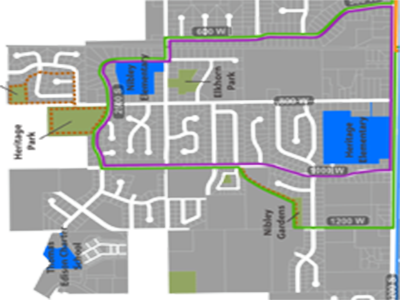Pedestrians should use sidewalks when available. If there are not any sidewalks available, pedestrians should walk/run against traffic on the side of the road.
Pedestrians should use marked and unmarked crosswalks when crossing the street.


Nibley City would like to encourage all of our citizens to experience our city’s trails and routes system. Using these facilities can be a fun and healthy way to get around town and to exercise. We also urge our citizens to be safe while using our trails and routes. The following tips are some safety guidelines while using these facilities.
Trails and routes systemPedestrians should use sidewalks when available. If there are not any sidewalks available, pedestrians should walk/run against traffic on the side of the road.
Pedestrians should use marked and unmarked crosswalks when crossing the street.
Walk/Run where drivers can see you.
Wear bright colored clothing during the day and light-colored or reflective clothing at night.
Use hand and arm signals to indicate your intention to stop, merge or turn. Signal as a courtesy and for safety as required by law.
Whenever possible, ride in a straight line, to the right of traffic, at about a car doors width away from parked cars.
Check out the Cache Valley Biking Guide for more information and valley bike routes.